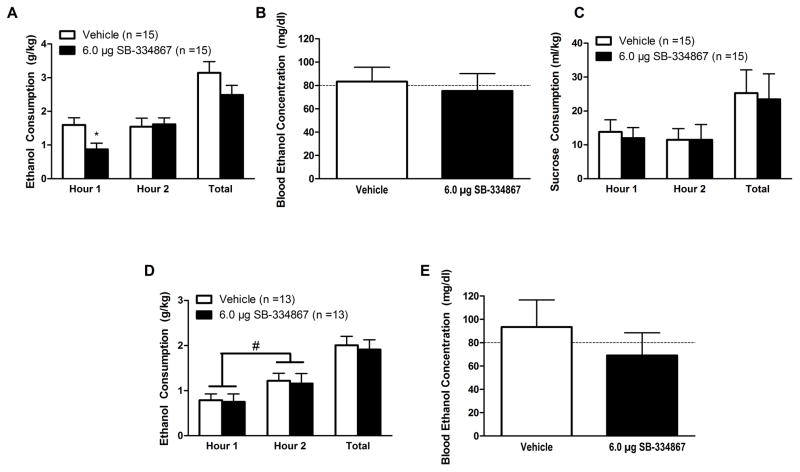Figure 3.
Inhibition of OX1Rs in the CeA selectively reduces binge-like ethanol consumption. Animals infused with SB directly into the CeA exhibited blunted binge-like ethanol consumption relative to vehicle-treated controls but only during the first hour of testing (A). Despite this reduction in consumption, no significant effect was observed in BECs as measured at the end of the two hour test period (B). Interestingly, intra-CeA infusion of SB did not significantly affect binge-like sucrose consumption at any point during the test (C). Importantly, this phenomenon was specific to the CeA treatment as local infusion of SB into the BLA did not significantly impact binge-like ethanol drinking (D)- although animals did drink significantly more ethanol during the second hour of testing relative to the first, regardless of treatment condition. Moreover, intra-BLA SB did not affect subsequent BECs (E) at the end of the two hour test period. Data presented as mean ± SEM. * denotes that p < 0.05 relative to vehicle-treated animals during the first hour of testing. # denotes that animals drank significantly more during the second hour of testing relative to the first hour regardless of treatment group. Dotted line in (B) delineates 80 mg/dl, the minimum BEC to constitute a binge episode. Data presented as Mean ± SEM.

